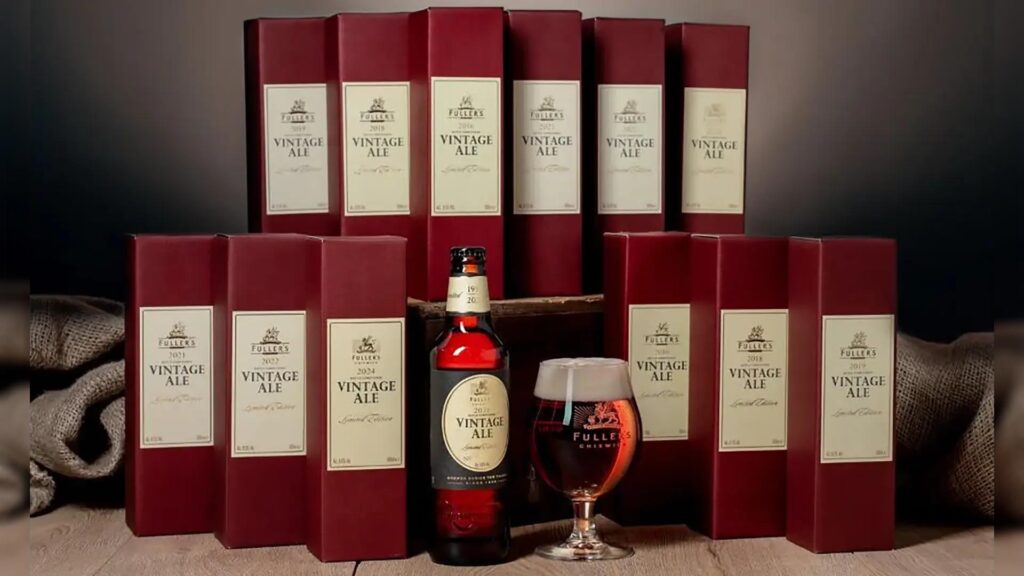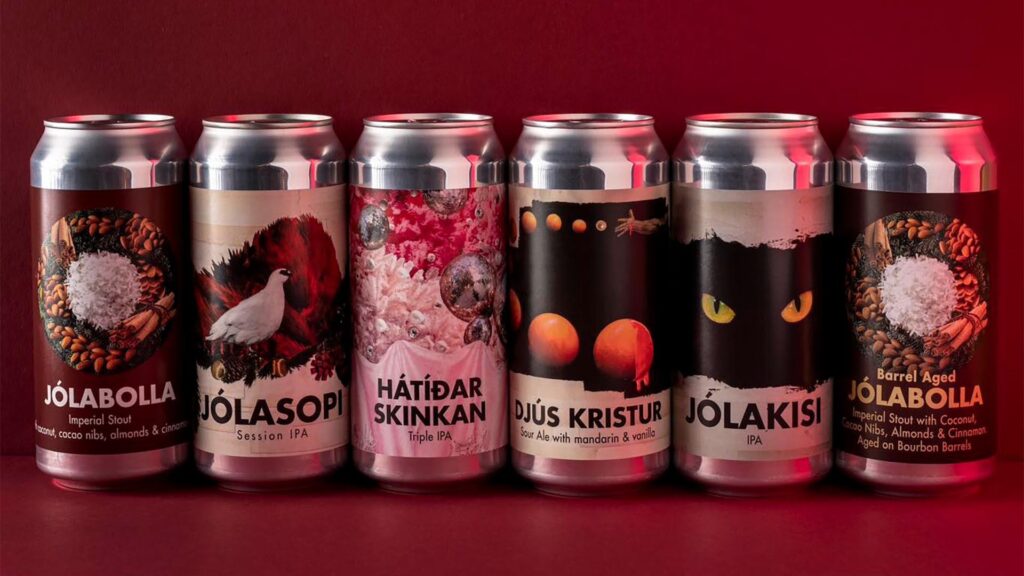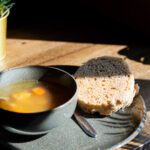Christmas beers in Iceland give beer lovers something extraordinary to look forward to when the holiday season arrives. These seasonal brews capture the festive spirit with unique flavours, warming spices, and a touch of holiday magic. This year, Iceland’s state liquor stores offer over 60 different Icelandic Christmas beers—a true Jólabjóraflóð, or “Christmas beer flood,” reminiscent of the famous Jólabókaflóð (Christmas book flood). Blending creativity, tradition, and a uniquely Icelandic charm, these brews highlight how the country has developed such a rich and diverse seasonal beer culture. But what makes a beer a Christmas beer, and how did this tradition take root in Iceland?
Before we start, if you’re interested in reading more about beer in Iceland, check out our other blog posts:
The Best Beers in Iceland
Beer in Iceland: A Historical Overview
Discover the Best Bars in Reykjavik
Craft Breweries in Iceland – Travel Around the Country
History of Christmas Beers
Traditionally, bock beers were brewed in winter to be enjoyed during the colder months or spring festivals like Lent and Easter. Similarly, winter warmers—a seasonal beer style including old ales and mild ales—emerged as hearty, full-bodied brews. Before industrialisation in 18th-century England, some winter warmers were aged in oak barrels for months or years, gaining complex flavours from tannins and wild yeasts. Today’s winter warmers are malt-forward, darker beers, often spiced for added festive charm. Tied to holiday traditions, Wassail-style beers are sometimes considered part of this category.
These traditional styles evolved differently across Europe, with countries like Germany, Austria, and Belgium bringing their unique spin to the season.
Germany and Austria: Weihnachtsbier
In Germany and Austria, Christmas beers often belong to the Festbier family and are brewed for events like brewery anniversaries or festivals. These are malty lagers with a stronger body and higher alcohol content (around 5.5% ABV) than everyday beers.
Winter also marks the season for Weihnachtsbock, a stronger lager (6–7% ABV) with rich flavours of chestnut honey, dried plums, and hints of liquorice root. Unlike other Christmas beers, these adhere to the Bavarian Reinheitsgebot, avoiding spices and relying on malt and yeast for their flavour.
United Kingdom: Old Ales for the Holidays

British Christmas beers are typically brown or dark old ales, known for their robust malt character and medium to high alcohol content (6.5% ABV or more). These top-fermented beers are rich in caramel and roasted malts, complemented by the earthy bitterness of English hops.
Traditionally aged, these ales develop complex flavours and a warming, festive profile. Their notes of shortbread and toffee make them a popular addition to Christmas pudding recipes, often paired with the same beer for a perfectly balanced holiday treat.
Belgium: Kerstbier and Festive Creativity
Belgium’s approach to Christmas beer is famously unrestrained, resulting in hundreds of unique brews celebrated at the Kerstbier Festival in Esen. Belgian brewers embrace creativity, using top-fermentation yeasts that add fruity and spicy aromas and ingredients like coriander, cinnamon, ginger, allspice, star anise, and even apple purée. Many take inspiration from Glühwein (mulled wine), capturing its warmth and festive character.

Classic Belgian Christmas beers are typically high in alcohol, featuring notes of dried fruit (dates, figs) and warming spices, with a sweet yet structured body. However, Belgian brewers’ rejection of rigid rules also allows for dry, spiced saisons or hop-forward, bitter brews to shine during the season.
What Makes Beer a Christmas Beer?
Technically, any beer released as a Christmas beer qualifies—it’s as simple as that. There are no strict rules or brewing styles that define it. This lack of criteria might be frustrating for some, but for brewmasters, it’s an invitation to experiment and let their creativity run wild.
In Iceland, the tradition of Christmas beers is relatively young, largely because beer was banned from 1915 to 1989. Even before the complete prohibition, alcohol production was restricted. In 1900, Iceland banned domestic alcohol production while allowing imports, and a 1908 referendum led to full prohibition in 1915. Some restrictions eased over time, with wine sales permitted in 1922 due to trade agreements with Spain.
Tradition of Icelandic Christmas Beers
Iceland’s beer culture only re-emerged after the 20th-century ban, and the tradition of Christmas beers has grown rapidly in recent decades.
In Saga daganna by Árni Björnsson, a chapter on Christmas highlights the importance of beer in early Icelandic celebrations:
“Although conditions for brewing beer were difficult due to limited grain cultivation, it seems people were determined to persevere, as nearly all we can infer from accounts of Christmas celebrations in heathen times relates to Christmas drinking, Christmas ale, and Christmas feasts.”
During the Commonwealth period, beer was so essential to Christmas that brewing was codified in law. The Christian Laws section of Grágás states:
“People must prepare during the mid-days of Christmas by providing what is needed for the holiday, and this shall be called munngát” (munngát: to brew beer).
Modern Development of Christmas Beers
When the beer ban lifted in 1989, only two breweries operated in Iceland: Ölgerðin Egils Skallagrímsson and Víking. Both quickly began experimenting with Christmas beers. Víking introduced its Christmas beer in 1990, inspired by Tuborg’s famous Julebryg. This beer became a holiday staple and remains one of the most iconic Icelandic Christmas beers. Ölgerðin followed with Egils Malt Jólabjór, which became an annual tradition starting in 2002.

By 2006, only six Christmas beers were available at Vínbúðin, Iceland’s state liquor store, three of which were Icelandic. However, that year marked the beginning of Iceland’s craft beer revolution with the opening of Bruggsmiðjan (Kaldi) in Árskógssandur. Two more microbreweries, Mjöður in Stykkishólmur and Ölvisholt Brugghús in Flóahreppur, followed in 2007, and they quickly joined the Christmas beer tradition.
Microbreweries Changed the Scene
The rise of craft brewing prompted Iceland’s major breweries to innovate. In 2010, Ölgerðin launched Borg Brugghús, a microbrewery dedicated to craft beer. Vífilfell, meanwhile, began producing Einstök in Akureyri in 2011 for an American contract brewery. The Icelandic Association of Craft Breweries, founded in 2018, grew to include 26 members by 2023. With their flexible production lines, these smaller breweries adapted quickly to market trends and played a major role in diversifying Iceland’s beer landscape.

The Icelandic Christmas beer scene grew exponentially during this time. By 2015, 15 Icelandic Christmas beers were available, prompting newspapers like Fréttablaðið to publish separate lists for Icelandic and imported options. By 2017, over 40 Christmas beers were on the market; this year, 2024, the number has grown to around 60. It is interesting to note that in 2021, there were 81 Icelandic Christmas beers for sale. Today, Icelandic Christmas beers span a wide variety of styles, from Belgian ales and imperial stouts to DIPAs, sours, porters, and more.
Flavours and Styles of Icelandic Christmas Beers
The seasonal nature of Christmas beers and the creative freedom of brewers means that these beers often change year after year. However, some staples brewed annually have become traditions, sparking anticipation: Will this year’s version be as good as last year’s?
Tuborg’s Julebryg has famously turned this anticipation into a marketing spectacle, with launch events in early November celebrated in many countries, called J-dag (Julebrygdag) accompanied by their tagline: “The snow is falling.” Similarly, Icelandic staples like Egils Malt Jólabjór and Víking Jólabjór are essential for many households during the holiday season.
Creative Christmas Beers
Borg Brugghús has built a tradition of naming its Christmas beers after Icelandic Yule Lads. Among its highlights is Hurðaskellir, an imperial porter that has been a favourite for years. In 2024, Borg introduced Pönnuskuggi, a new Christmas stout named after a lesser-known Yule Lad, while also continuing to offer Skyrjarmur, a blueberry sour, and Baggalútur, an amber ale, both named after lesser-known Yule Lads as well.

Other breweries have brought bold creativity to the season. RVK Brewing Company offers beers like Ákaflega gaman þá (a double IPA named after an Icelandic Christmas song) and Eitthvað fallegt? (a session IPA). Then there’s ORA Jólabjór, a beer made with green peas and red cabbage—traditional Christmas dinner sides in Iceland—which has become a love-it-or-hate-it tasting experience each year.
Malbygg, another prominent craft brewery, has an exciting lineup this year, including Jólabolla Barrel-Aged Imperial Stout, the regular Jólabolla Imperial Stout, Hátíðarskinkan Triple IPA, and Djús Kristur, a sour ale with mandarin and vanilla.
“Christmas” Versions of Fan Favourites

Many breweries release festive versions of their most popular beers, sometimes sparking debates about what a “true” Christmas beer should be. For example, Malbygg offers Jólakisi IPA and Jólasopi Session IPA, festive twists on their regular Kisi and Sopi beers. RVK Brewing follows suit with Jóla Magnús Frúktus, a Christmas version of its fruit sour.
Larger breweries also join in, with offerings like Jóla Kaldi, a lager from Bruggsmiðjan Kaldi, and Ölgerðin’s Gull Lite Jól (a white ale) and Gull okkar jól (a light lager). Ölvisholt contributes with Jóla Klassík and Jóla Lite, while Víking offers Jólabóndi IPA and Víking Lite Jól, catering to both festive beer fans and those who prefer lighter, easy-drinking options.
Why Are There So Many Icelandic Christmas Beers?
The abundance of Icelandic Christmas beers is a curious phenomenon without a definitive answer. Icelanders are known for quickly embracing trends, and when something new and exciting hits the market, it often gains traction fast.
Although the tradition of Christmas beers is centuries old in other countries, it’s relatively new in Iceland. With over 20 microbreweries competing for attention, creating festive beers has become a way to stand out and attract beer enthusiasts.
Whatever the reason, beer enthusiasts aren’t complaining. The growing selection of Christmas beers only adds to the festive cheer, making the holiday season even more enjoyable for those eager to explore new flavours and styles.
Iceland’s Christmas beers offer something for every palate, whether you prefer imperial stouts, sours, or the unconventional ORA Jólabjór. Explore some of these festive brews firsthand by joining our Reykjavik Beer and Booze Tour or the private Reykjavik Microbrewery and Distillery Tour—your chance to discover your own holiday favourite.
What is your favourite Christmas beer?









